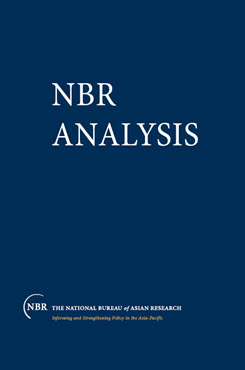NBR Analysis vol. 6, no. 3
America, Japan, and APEC
The Challenge of Leadership in the Asia-Pacific
APEC, whose membership links the Western hemisphere with Asia and spans the world’s largest and most dynamic regional economic market, is the most significant new international institution in post-Cold War Asia that attempts to address new realities in the Pacific. But this institutional innovation is a paradox. On the one hand, it has become a regional focus for trade policy planning. On the other hand, it gives no recognition of the interdependence of economic prosperity and security. Furthermore, there are no formal procedures for making decisions and no sanctions or guidelines for conflict resolution. APEC, with its narrow economic parameters and rudimentary organizational features, thus far lacks the essential requirements of an enduring community of nations.
The papers in this issue of the NBR Analysis address this paradox and the issue of linking economics and security in determining the future of the region. Donald Hellmann, the director of the APEC Study Center at the University of Washington and chairman of the U.S. Consortium of APEC Study Centers, considers the future role of the United States, whose military presence in the Pacific has helped to allow the transformation of Asia since World War II. Professor Hellmann stresses the need for linking economics and security and highlights the indispensable role of American leadership in creating a new institutional framework.
Akio Watanabe and Tsutomu Kikuchi present a Japanese perspective which, while maintaining the importance of an American role, argues in favor of an evolutionary approach to institution-building.
Kenneth Pyle offers an analysis of the post-Cold War changes in Japanese foreign policy and argues for a revised U.S.-Japan alliance to reflect the new realities.


